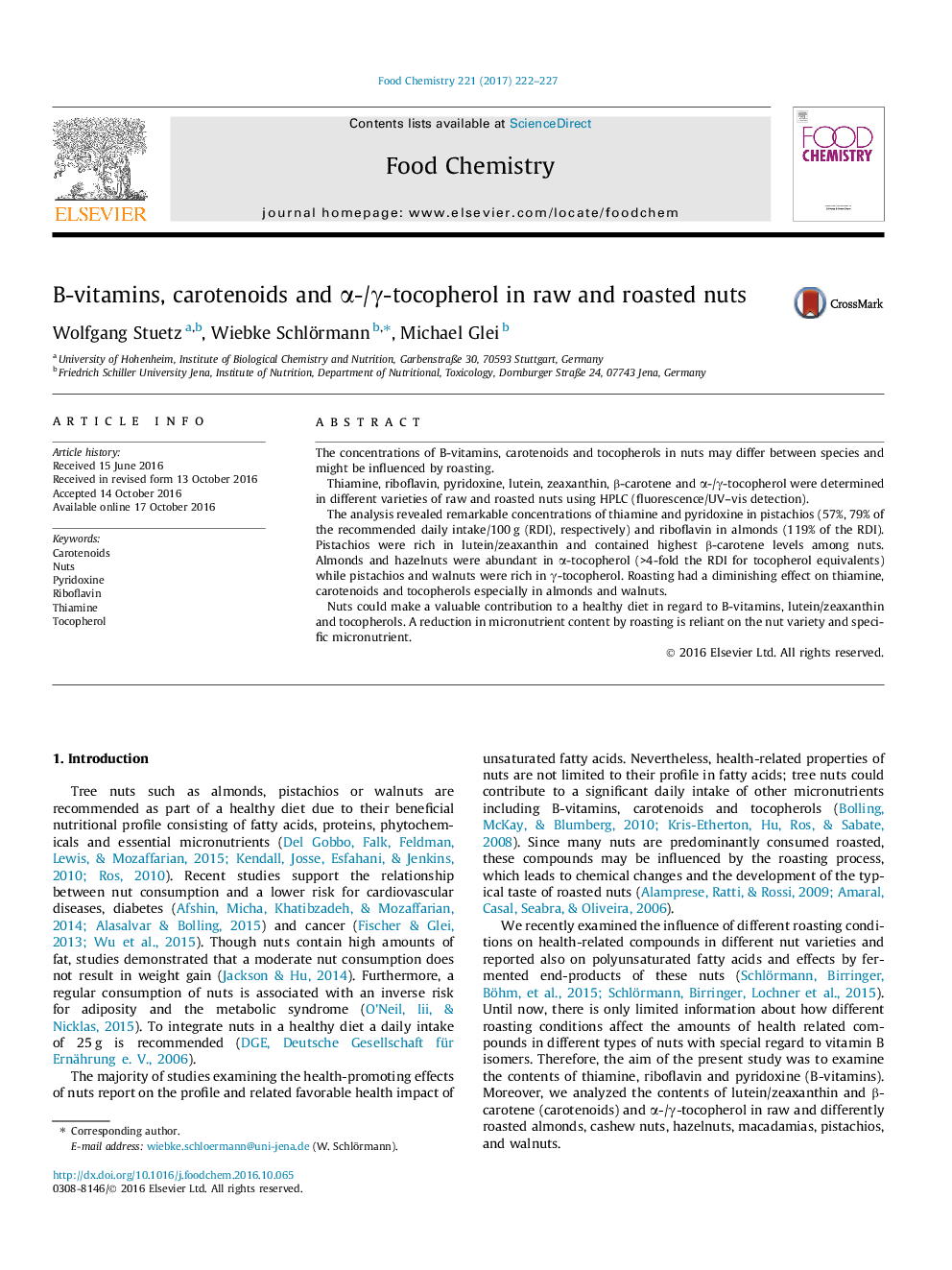| Article ID | Journal | Published Year | Pages | File Type |
|---|---|---|---|---|
| 5133732 | Food Chemistry | 2017 | 6 Pages |
â¢Different raw and roasted nut varieties were examined.â¢B vitamins, carotenoids and tocopherol concentrations were determined.â¢Individual B vitamers were analyzed (reversed-phase HPLC/fluorescence detection).â¢The influence of roasting on these health related compounds was determined.â¢Roasting diminished the micronutrient content dependent of the nut variety.
The concentrations of B-vitamins, carotenoids and tocopherols in nuts may differ between species and might be influenced by roasting.Thiamine, riboflavin, pyridoxine, lutein, zeaxanthin, β-carotene and α-/γ-tocopherol were determined in different varieties of raw and roasted nuts using HPLC (fluorescence/UV-vis detection).The analysis revealed remarkable concentrations of thiamine and pyridoxine in pistachios (57%, 79% of the recommended daily intake/100 g (RDI), respectively) and riboflavin in almonds (119% of the RDI). Pistachios were rich in lutein/zeaxanthin and contained highest β-carotene levels among nuts. Almonds and hazelnuts were abundant in α-tocopherol (>4-fold the RDI for tocopherol equivalents) while pistachios and walnuts were rich in γ-tocopherol. Roasting had a diminishing effect on thiamine, carotenoids and tocopherols especially in almonds and walnuts.Nuts could make a valuable contribution to a healthy diet in regard to B-vitamins, lutein/zeaxanthin and tocopherols. A reduction in micronutrient content by roasting is reliant on the nut variety and specific micronutrient.
